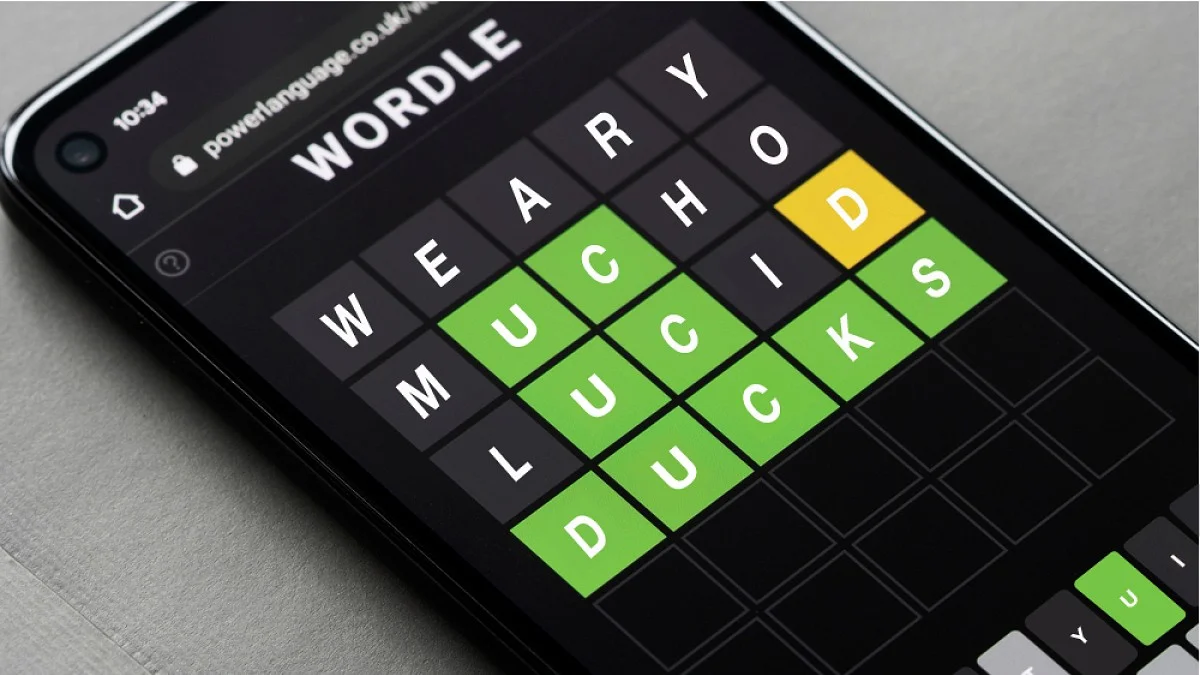Heading into the month of love, roses and cheesy romantic comedies, a UO alumnus is finding viral success with an application built as a love letter for his partner.
Josh Wardle, a 2011 Master of Fine Arts graduate in digital arts, has created three viral digital projects since 2015. His latest sensation is Wordle, a play on the British software engineer’s last name, and it’s currently sweeping global social media channels and phone chats, with 2.7 million users and rapidly climbing.
Wardle, a software engineer in Brooklyn, created the game for his partner, Palak Shah, as a digital love letter for her interest in word games. Their burgeoning interest in both The New York Times’ Spelling Bee game and the daily crossword led Wardle to dust off an old idea from 2013.
And its success has now come full circle. The publication whose games inspired Wordle has become the owner of the viral hit. As reported Jan. 31, The New York Times acquired the program for an undisclosed price in the low seven-figure range.
“New York Times Games play a big part in its origins,” Wardle said in the Times’s statement, “and so this step feels very natural to me.”
When the game moves to the Times, it will remain free to play for new and existing players with no changes made to its gameplay.
“Josh Wardle was a well-spoken and thoughtful graduate student in the Department of Art at the University of Oregon,” said John Park, a senior instructor of art and technology who worked with Wardle in 2010–2011. “His interests in harnessing internet participation in conceptual digital arts projects led him to a post-graduate career at Reddit and Pinterest, and we are all excited to see his meteoric rise to popularity through the Wordle.”
The game gives players six chances to guess the five-letter word of the day. After entering their five-letter guess, the elegant user interface reviews each letter and informs players how successfully their input matches the word of the day.
Players who correctly guess letters are rewarded with green or yellow boxes, perhaps a sly nod to his alma mater as well as a subtle identification system that lets players know they are on the right track to identifying the day’s word. Yellow boxes identifying correct letters but wrong position in the word and green boxes indicating correct letter and placement. Gray boxes indicate a letter not found in the day’s word.
Once players solve the word-of-the-day or use up their guesses, they are given the option to share their results on social media with a collection of green, yellow and gray boxes, the puzzle number, and the number attempts out of six. That simple posting, inspired by players trying to share results on social media without spoiling the puzzle, is one way the game sticks with players and creates intrigue. The experience of guessing five-letter words in six guesses or less is another way.
When a green or yellow box flips on a letter, it can create a dual sense of anxiety and accomplishment, moving one step closer to solving the puzzle but also having one less chance to solve it.
Wardle said the game’s rejection of common free-to-play strategies and disentanglement from data mining help encourage repeat, daily play and gives a layer of innocence to the project.
“It’s something that encourages you to spend three minutes a day,” Wardle told the The New York Times. “And that’s it. Like, it doesn’t want any more of your time than that.”
Wardle prototyped a similar game back in 2013 but ultimately scrapped the idea due to a lack of interest from friends. The prototype originally featured endless play and a truly overwhelming word list for the application.
“I just dumped every five-letter word in the English language from whatever dictionary I found online,” Wardle told Slate.
With Shah’s help, Wardle was able to make a few tweaks, including a drastic cut to the program’s word list from 12,000 to 2,500. The tightened word list and once-a-day functionality has created an innocent, enjoyable game that encourages repeat play thanks to its rejection of mobile game norms.
While the game is now a viral sensation, it’s worth noting that the application was a labor of love by the UO alumnus. No matter how much attention the app will receive over the next few months, Shah appreciates being the primary inspiration for the game.
“It’s really sweet,” Shah told the Times. “This is definitely how Josh shows his love.”
—By Nick Noyes, College of Design


